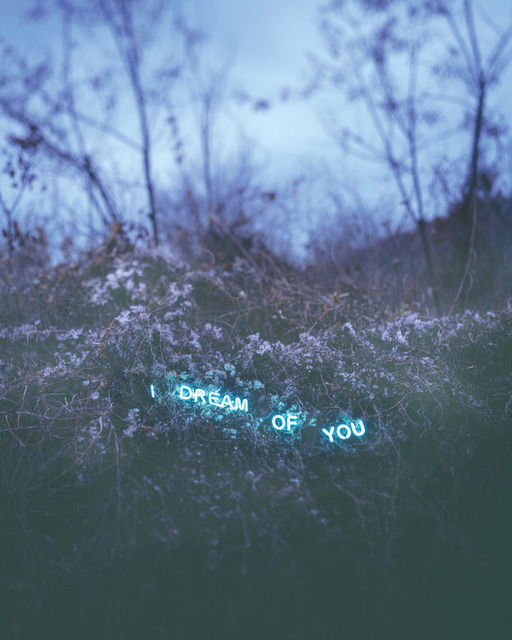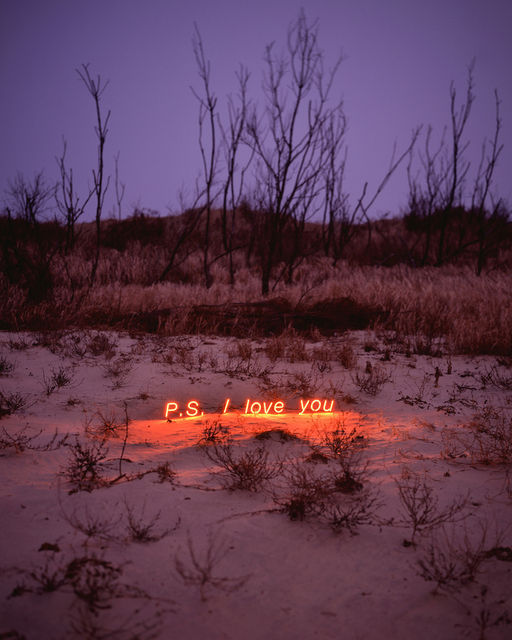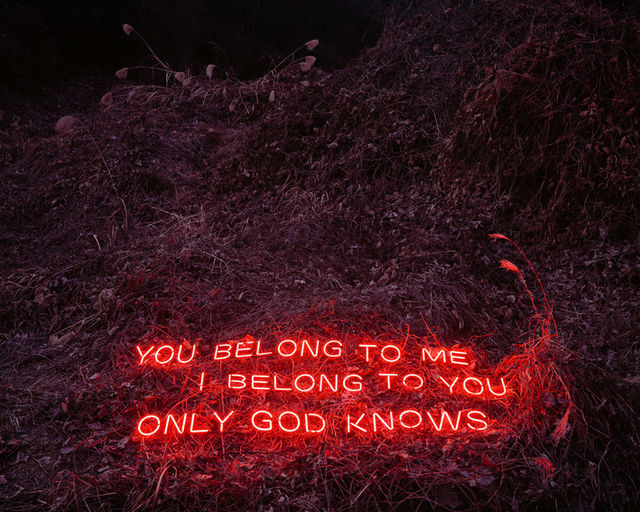







Južnokorejska umetnica Jung Lee rođena je 1972. godine u Seulu. Ono što njene instalacije odnosno fotografije odlikuje jeste pejsaž u koji su smeštene neonske poruke sa uobičajenim rečima koje izgovaraju zaljubljeni i, kako to često biva – povređeni. Pomalo paničnim i bizarnim ponavljanjem, ona reči koje svedoče o krahu emocija banalizuje, svodeći ih na neonski sjaj, šarenilo koje podeća na višemilionske gradove noću kada se ljudi vraćaju u svoje stanove-kutije za šibice. Na taj način umetnica svedoči o sveopštoj niskokaloričnosti emocija, kao i o otuđenju koje samo po sebi nije otuđeno od potrebe za pripadanjem i emocijom, ali pred dosezanjem istih jeste nemoćno. Patetici, ali i dodatnoj bizarnosti – koja ne nedostaje umetnosti dalekog istoka – doprinose pejsaži (koji se meni naročito dopadaju) čija je praznina zapravo praznina duše onih koji ove poruke odnosno pitanja ponavljaju.
Umetnica je imala zapaženu izložbu u Green Art Galery u Dubaiju. Sa sajta galerije navodim citat:
“Working across sculpture and photography, the exhibition will present works from both her Aporia and Day and Night Series. Aporia, meaning “coming to a dead end” in Greek, was inspired by Roland Barthes’s “A Lover’s Discourse” that tells the story of the ineptitudes of people in love. According to Barthes, when one falls in love the beloved becomes a mystery and one will ceaselessly try to figure out the reasons for their mysterious feelings. The desire to express one’s love produces lies and conflicts leading to a dead end. For Lee, those empty phrases reveal the solitude and sorrow of modern people today.
Inspired by Barthes’s close reading of desire and love, Lee slows everything down patiently analyzing that most intense and overwhelming of states, unanswered desire – the language of complete love and the deep solitary state it throws the lover into. Collecting cliched expressions of love and hatred- very much like Barthes’s collections of of hesitations, stammerings and gasps- Lee places them in deserted landscapes in the form of neon text sculptures, mimicking cold neon signs so often found in cities. The result is a group of beautiful and melancholy empty landscape photographs, contrasting sentimental phrases such as “I still remember”, “Once in a lifetime” and “How could you do this to me?”, with stark layouts of deserted plains or barren snow fields.” [1]







